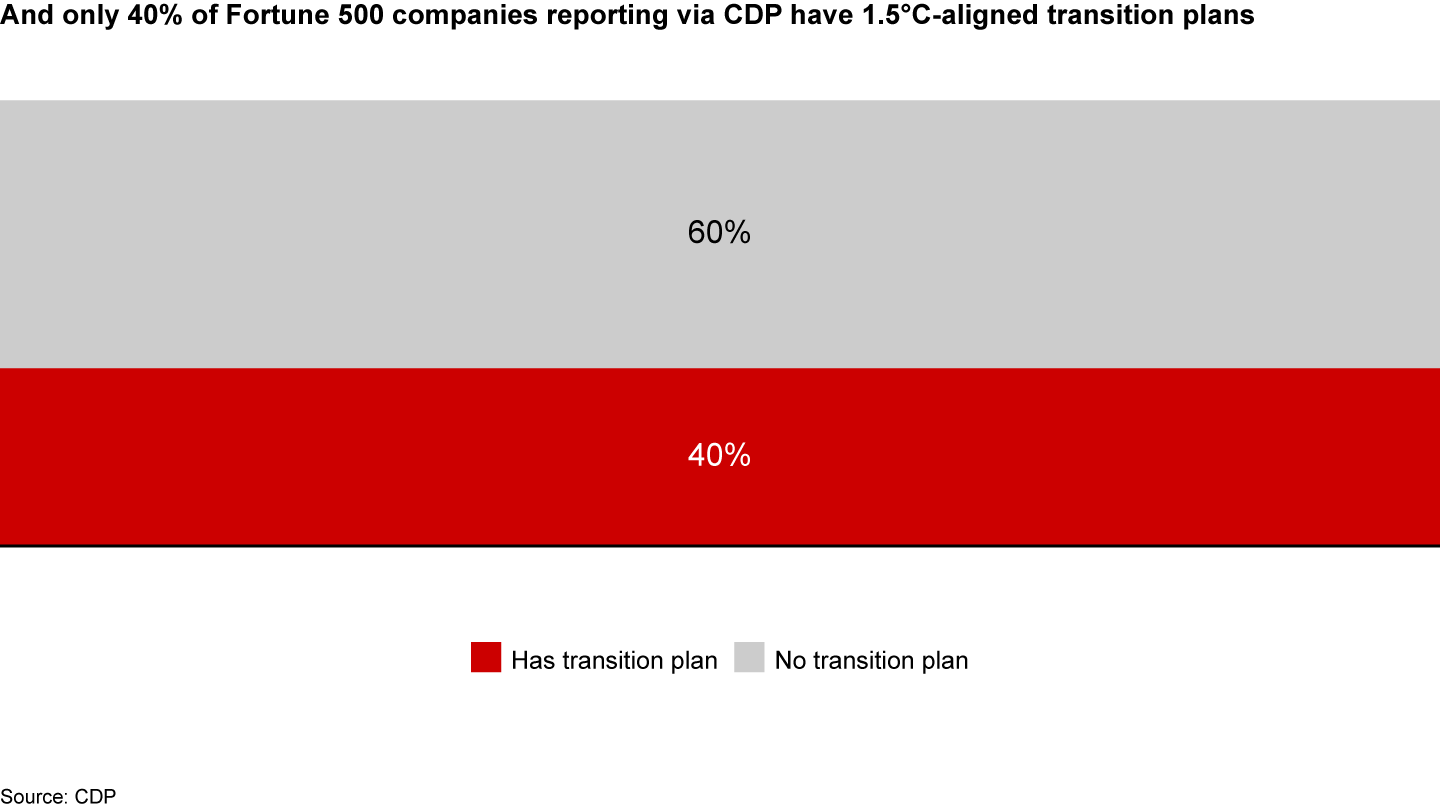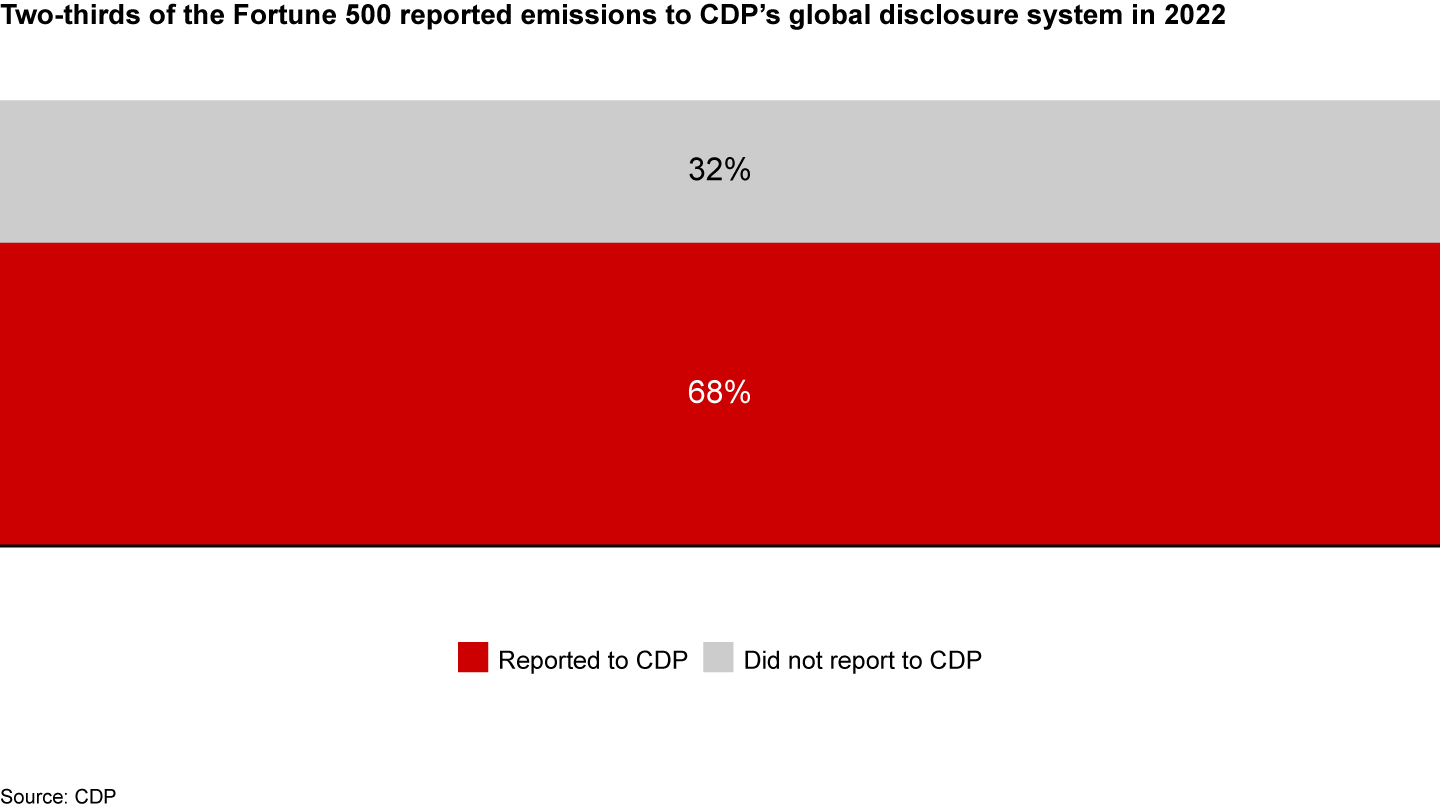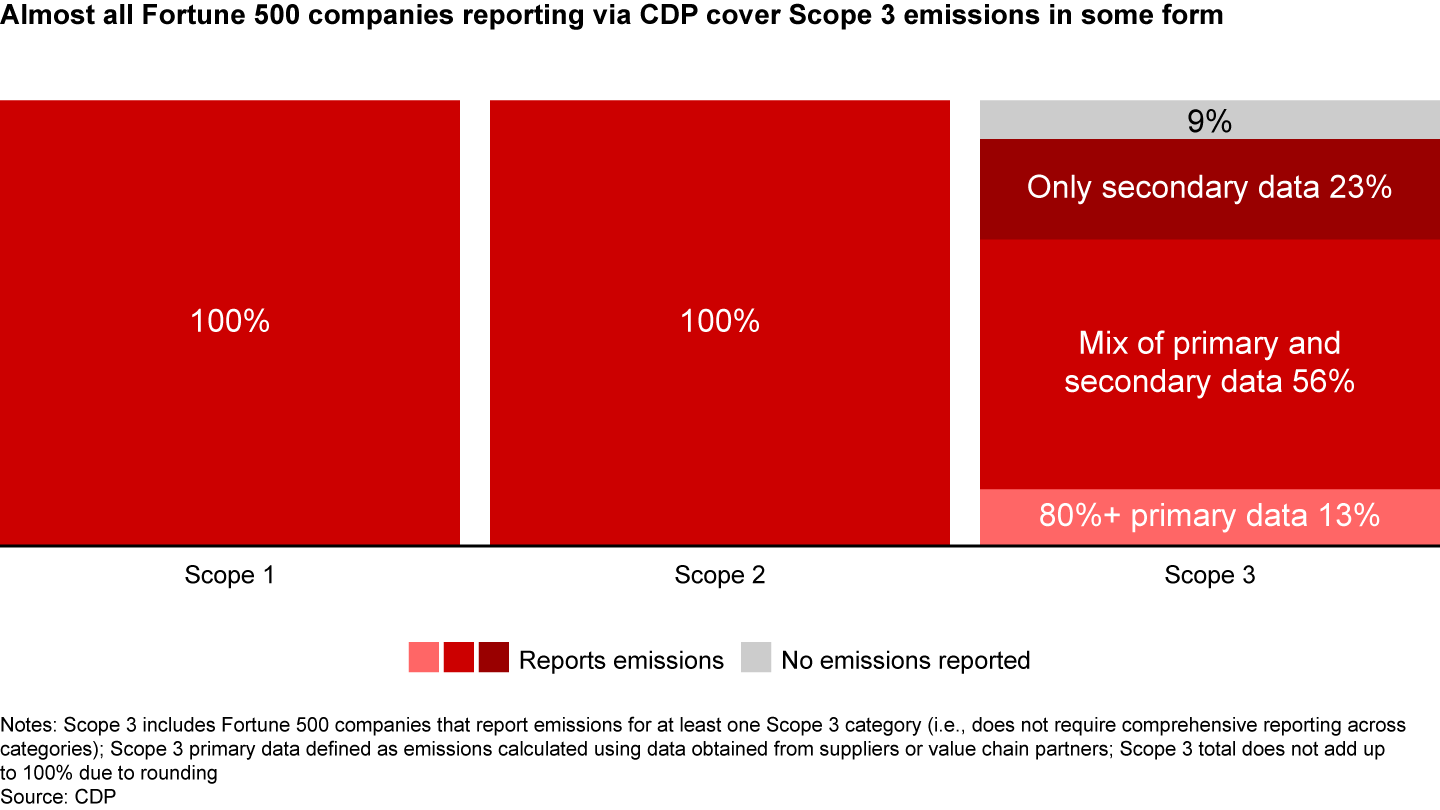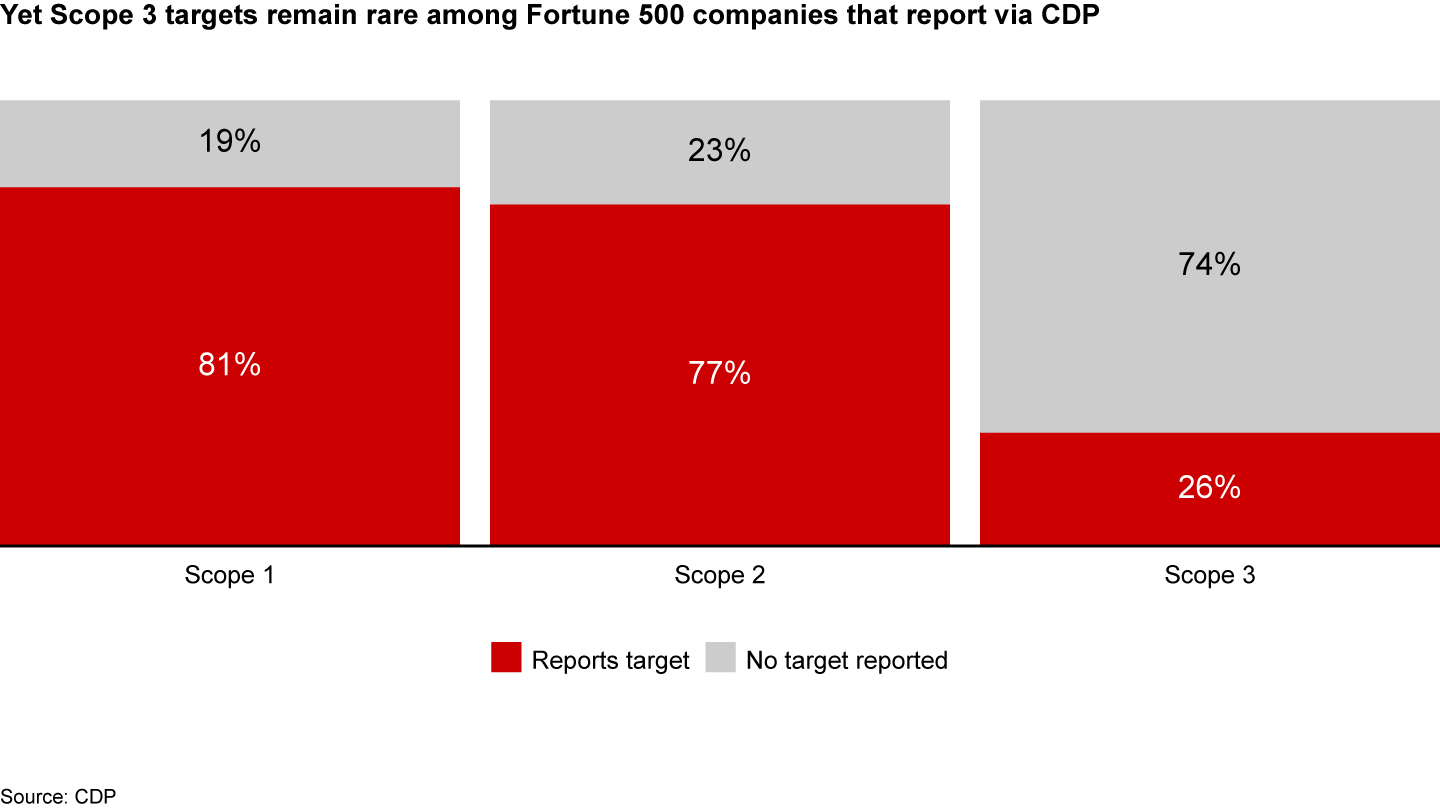Etude

En Bref
- Executive teams have a narrow window to prepare for new climate disclosure requirements arriving from multiple directions.
- The shift from voluntary to mandatory disclosure means sustainability is moving squarely into the CFO’s office.
- Companies can differentiate themselves and create value by crafting a climate transition plan that allows them to respond to these new demands in a strategic and integrated way.
It’s rare that accounting becomes big news, but that’s exactly what’s happening in the corporate ESG conversation. For many companies, climate-related disclosure is on the verge of becoming part of their mandatory annual financial reporting. This is an undeniable milestone for accounting that requires new capabilities in the CFO’s office. More important, it’s a pivotal moment for integrating sustainability into a company’s strategy and core operations—one that will have repercussions well beyond financial functions.
Making climate disclosure a more regulated process that may require assurance from an auditor or similar external reviewer has far-reaching implications, partly because the change is arriving from many directions at once. Take the EU’s Corporate Sustainability Reporting Directive, which will start to shape environmental and social disclosures in full-year 2024 reports published in 2025. These requirements won’t just hit large and listed companies within the EU’s 27 member nations; they are also likely to apply to European subsidiaries of almost all Fortune 500 companies due to the size of their European footprint.
Meanwhile, disclosure standards announced by the International Sustainability Standards Board (ISSB) are in the process of being incorporated into regulatory requirements in established and emerging economies alike. They are quickly becoming a global norm and have been endorsed by the International Organization of Securities Commissions (IOSCO), which called on its 130 member jurisdictions to consider adopting the ISSB standards. And there’s a push by the US Securities and Exchange Commission to finalize enhanced climate-related disclosure requirements for US public companies, following a proposal issued in the spring of 2022.
Bain Partner Torsten Lichtenau sits down with Stephane Biguet, chief financial officer of SLB, to discuss the impact of climate disclosure standards.
Climate-related reporting requirements are also evolving to meet state-level policy and risk management objectives. Many Fortune 500 companies are likely to be affected by California’s Climate Accountability Package. Comprised of two bills signed into law in October 2023, the package requires US-incorporated companies that do business in California and have more than $500 million in annual revenues to prepare biennial reports disclosing climate-related financial risk and describing measures adopted to mitigate and adapt to that risk. Companies with more than $1 billion in annual revenues will be required to file annual reports publicly disclosing their Scope 1, 2, and 3 greenhouse gas emissions.
The evolving global picture is muddied a little by variations in the scope of emissions reporting set to be required under each reform. However, it’s clear that disclosure is moving from the voluntary to the regulatory sphere, and many companies will need a new, cross-cutting approach to keep up, including the right talent to meet the moment.
While the CFO will be instrumental in meeting new disclosure requirements, companies can’t afford to lean solely on the finance team. Fulfilling the requirements will require deep expertise in financial disclosure, carbon accounting, and sustainability—and how each of those elements affects business strategy. The increased transparency and accountability implicit in regulated disclosure means that failure to deliver on promises will be quickly noticed and punished—not just by investors but also by customers (many of whom will be facing their own pressure to cut indirect emissions from suppliers) and by employees keen to understand and support their company’s sustainability activities.
At the very least, finance teams at affected companies will need to change how they work. In the most carbon- and energy-exposed industries, a joined-up approach across the business will be required, with an explicit link between strategy, carbon target setting, and ultimately the concrete actions needed to achieve emissions reductions and create value in the process. It’s a profound shift that will demand going well beyond the bare minimum of compliance with new disclosure requirements. For some companies, it offers a new path to strategic differentiation and competitive advantage.
The climate transition plan: pivotally important, seldom mastered
Regulated climate disclosure won’t affect all companies equally and will vary by industry. But the impact will indeed be meaningful for most listed businesses. The most affected will include those with significant carbon and energy intensity; those that are already under heavy customer and investor scrutiny; those that are operating in the context of rapid changes in regulation, technology, and demand; and finally, those that are most vulnerable to climate risk events.
For these companies, regulated climate disclosure will tee up a series of decisions that the executive team—including the CFO—will need to grapple with, alongside the board:
- What’s the right level of carbon ambition, considering not just stakeholder expectations but also our ability to achieve reductions and still create value?
- How do we ensure and demonstrate that our business is resilient and attractive under various climate scenarios?
- How do we demonstrate progress and the ability to create value on our decarbonization journey?
- How do we embed decarbonization in how we govern and run the business?
- How do we sharpen our voice on policies and regulations in order to accelerate the transition in our industry?
To answer these questions in a strategic, integrated, and credible way, companies need to develop a climate transition plan that is resilient under a variety of scenarios. International norms and guidance for transition plans are also emerging: The UK’s Transition Plan Taskforce just issued a disclosure framework. But despite mounting scrutiny from investors and direction from regulators, few companies have mastered transition planning. That’s clear from data gathered by CDP, the nonprofit that runs the world’s largest voluntary environmental disclosure system. While most Fortune 500 companies report carbon emissions, only 40% report having a transition plan aligned with the end-of-century warming target of 1.5 degrees Celsius (see Figure 1).
How to create a best-in-class climate transition plan
The emphasis and level of rigor for a transition plan will vary by company, depending on the industry and the context. Nonetheless, there are five key elements that leaders cover well.
Differentiate through delivery credibility (not just ambition). It goes without saying that companies need targets aligned with stakeholders’ increased expectations, especially those of investors and customers. However, since these targets will be subject to third-party verification, they must be backed by a credible delivery plan that proves you can deliver in both the short and long term.
Demonstrate flexibility across scenarios. Companies will also be judged on how their transition plans can adapt to uncertain factors in areas such as regulation, technology, the willingness of investors and lenders to finance different assets, and the willingness of customers to pay for decarbonization. That means modeling options to showcase resilience and attractiveness across multiple climate transition risk scenarios (such as the International Energy Agency’s STEPS, APS, and NZE scenarios) while also factoring in extreme weather events. Nurturing capabilities within the finance and sustainablility teams to keep pace with the increasingly quantitative and financial nature of climate risk assessment will be key. Above all, though, companies need to show they have the flexibility to create value across multiple possible futures.
Put value creation at the heart of execution. Many executive teams that have set targets are now in the middle of the hard work to figure out how to reach them. About a quarter of companies are not on track to meet their near-term Scope 1 and 2 emissions reduction targets, while a third are not on the trajectory to achieve their Scope 3 reduction goals. Companies finding a way through are linking carbon and energy transition to value creation and an effective business case; they are showing how low-carbon offerings meet customer needs, reduce cost in some cases, and improve strategic resilience. That business-focused pragmatism can be an integral part of the “proof points” companies use to demonstrate credibility and progress to multiple stakeholders.
Weave the plan into the fabric of the business. To be credible, a transition plan needs to be an integral part of a company’s governance. Leading businesses are already weaving their climate transition plans into more general planning, performance management, and incentives. They are also ensuring that the value of carbon is reflected in decision making; many are making that explicit through an internal carbon price factored into capital planning decisions. Specialized digital tools for carbon accounting and management are also helpful. The best solutions bring clarity that improves decision making and enables companies to engage suppliers and influence customers (through product-level carbon footprints), while automating climate-related disclosures to regulatory bodies.
Be a policy shaper, not a policy taker. Energy transition policy—increasingly shaped by national concerns over security and energy affordability as well as climate change—is overlapping with trade and industrial policy, as governments race to capture technological advantage in a world with constrained resources and energy supply volatility. Companies that can navigate policy uncertainty, and shape policy to the benefit of accelerated energy transition and their bottom line, will stand out. Changes to markets arising from regulation or policy shifts will bring exceptional margins for those with foresight, as other market participants fail to anticipate evolving demand. And there will be stranded assets and capabilities when regulations outpace expectations.
The French multinational Schneider Electric is one company that excels in addressing these imperatives in its transition plan. Helping customers decarbonize is at the heart of its strategy. It regularly evaluates climate-related risks and opportunities and publishes its progress toward its sustainability goals with its financial results every quarter. Its sustainability impact steering committee provides strong governance, and it uses an internal carbon price to reflect the value of decarbonization in business decisions. Through its participation in leading coalitions and initiatives, Schneider is also active in shaping climate policy and regulation.
Using disclosure as a catalyst for change
This once-in-a-generation accounting change is an opportunity for companies to clarify their carbon and energy transition ambition, build credibility with stakeholders, and create value by accelerating progress. There is a clear choice between mere compliance and leveraging these new regulatory requirements to sharpen business strategy and create lasting value.
The following questions can help frame a strategic approach that turns disclosure into a catalyst:
- How material is the carbon and energy transition for the future of our business?
- How credibly can we articulate how we will create value from the transition and remain resilient under multiple economic, policy, and physical risk scenarios?
- How robust is our transition plan, and does it withstand scrutiny from the investors and other stakeholders that matter?
- How well does our transition plan translate into the reality of the business, and is it integral to how we manage performance on an ongoing basis?
- Do we have the tools to regularly track and report progress on carbon in the same way we manage the rest of the P&L?








